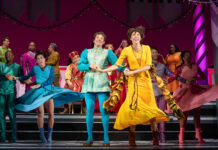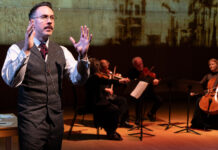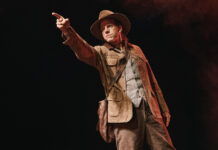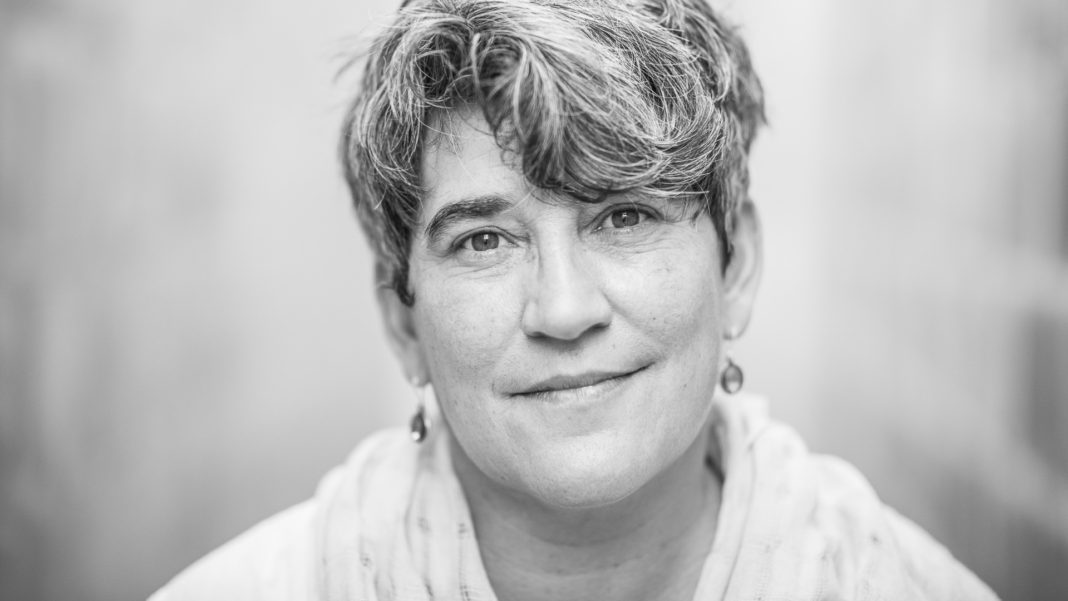Last March I spoke to Kristy Edmunds, Executive and Artistic Director, UCLA’s Center for the Art of Performance, about her decision to cancel the remainder of their season early in the pandemic. I reached out again to find out how Edmunds and CAP UCLA navigated 2020 and what she expected 2021 to have in store for the arts.
We spoke on December 15th as 2020 was nearing its end; the Covid crisis was escalating instead of diminishing; a new president had been elected and three weeks before the turmoil that shocked the world on January 6th.
Last week we got an update on CAP UCLA’s remaining events in their 2020-2021 season when it was announced on January 15th that all previously scheduled live events for this season had been cancelled. Not a surprise after what Edmunds told me.
What follows are excerpts from that conversation which have been edited for length and clarity.
When we spoke in March you said that it was important on an emotional and structural level to have a future time you can work towards. How have you managed the constantly shifting realities of the pandemic and how that impacts your ability to put a schedule together?
You know what I did at the beginning, I think you fall forward towards your biggest values. It clarifies things, at least for me. I had to pull my mind towards what is it we can do. What is my top priority? I decided early on to start initiating commissions, as in micro-commissions, commission with a small “c,” to as many different artists as we could to manifest different kinds of work.
What are you seeing as the cultural response, particularly in the creation of new material, to this past year?
There’s a lot of pretty deep soul searching. What is the work that feels the most necessary? Not necessarily my next idea, but what do I have to offer into this dialogue now where this economy is profoundly altered. I think many of them – and it depends on the art form – what are the stories that need to be told that help the public find a way back together. They are composing and making and thinking. You watch artists really authentically try to invent how they can contribute their artistry in a different way, which is revealing their humanity in a different way. There’s been a lot of really remarkable results.
Our biggest concern is how we put our bodies back together and try to hold a stage in a meaningful way. An audience is going to be ready to see us at top speed. It will take us a while to get there.
Over the past four years we’ve had an administration in place that essentially actively tried to defund the arts. With the Biden administration how do you expect the dialogue between government and the performing arts to change?
I think we’ll have some ears on that this time around. One of the biggest pieces that will fall forward in this is how do we now work on creating a national cultural policy. How do we look at the roll government does – and can – play in how artists are at the table for social and cultural belonging? We play a pretty substantial role in the grief of a nation coming back together in a much more compassionate way. That cultural policy and how we are valued for what we generate into a national and global community matters.
Our activity accrues benefits to society adjacent to us. Meaning, we seek money to sustain our practices. What we spend it on, and what our activities generate, benefits businesses peripherally and interdependent on us. The more we are put back into activation with a baseline support for that activation, it helps a recovery where adjacent interlocking things benefit along with us.
Can and will the arts fully recover from the pandemic? If so, what will it take?
In the health department updates I get, it will likely be unevenly distributed based on what part of the country we live in. It’s pretty clear that most of us, larger venues or anything with 200 or more people, are being strongly encouraged to look at early 2022 as to when we’ll probably have some more mobility of gathering to some scale. That’s a long time. Ticket revenues make up 50-75% of most organizations’ annual budget. That is eviscerated and will continue to be. The economic fallout will be much larger and longer. It’s probably an additional three years before you see something rebound.
When you look back on 2020, what were the best things to come out of the pandemic?
One of the best things was the way in which colleagues and organizations across the spectrum – from small tiny community cultural spaces up to the grand halls – we started sharing ideas, problem-solving, working on contract language, connections. You’re always reasonably pivoted within your profession and your eco-system to collaborate in service to one another in the big picture. How can we keep a cultural framework functioning? How can we keep each other persisting? How can we help each other overcome denial? How can we share strategies? A lot of those things were a really remarkable piece of it.
You told KCET during the Tune-In Festival that one thing that was important about the festival was to “ignite the public to stay strong and feel inspired.” How have you ignited yourself to do the same thing?
For me it’s about continuing to be in lockstep with what artists are doing. I can have a conversation with an artist, who is as profoundly distraught as I might be, but in that conversation we are able to reignite one another, to keep trying, to find a form, to change what that might be and keep trying.
I was talking to a dancer and she said live performance isn’t happening right now, but the dance is still alive. Artists are going “How do we keep collaborating and work with each other?” Artists are finding these places where somehow the glue in the cracks is a kind of kindness and compassion and a willingness to manifest some form of connection. That is ultimately what is going to be what the tail end of this is. We’ve been able to stand in solidarity with people and say we are here as part of what this is. We are able stand in front of a country that doesn’t understand our practice, but did find out that they actually missed us.
CAP UCLA’s upcoming streaming programs includes an already-running concert with saxophone legend Charles Lloyd (available through January 31st); Douglas J. Cuomo’s Seven Limbs featuring Nels Cline and the Aizuri Quartet (available February 12th) and Israel Galván Maestro de Barra on March 6th.
Photo of Kristy Edmunds by Lovis Ostenrick/Courtesy CAP UCLA










